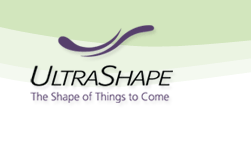

Don't let Liposuction Suck the Life out of you
Liposuction can help sculpt your body and is a way to remove fat quickly.
Specific areas may include the abdomen, hips, buttocks, thighs, knees,
upper arms, chin, cheeks and neck. Although no type of liposuction is
a substitute for dieting and exercise, it can remove stubborn areas of
fat that don't respond to traditional dieting and exercise.
Over the
last 10 years, surgical liposuction (also known as 'lipoplasty' or 'suction
lipectomy,') has undergone some refinements. New techniques on the market
now include ultrasound-assisted lipoplasty (UAL), the tumescent technique,
and the super-wet technique.
Fluid
and Fat Loss
What happens during liposuction is this... localized deposits of fat are removed to recontour certain areas of the body. Through a tiny incision, a narrow tube or cannula is inserted and used to vacuum the fat layer that lies beneath the skin. The cannula breaks up the fat cells, suctioning them out. The suction action is provided by a vacuum pump or a large syringe, depending on the surgeon's preference.
The problem with liposuction plastic surgery is that fluid is lost along with the fat, and it's vital that this fluid be replaced during the procedure to prevent shock. For this reason, patients need to be carefully supervised and receive intravenous fluids during and immediately after this procedure.
Fluid Injection: a medicated solution is injected into fatty areas before the fat is removed. The fluid is a mixture of intravenous salt solution, lidocaine (a local anaesthetic) and epinephrine (a drug that contracts blood vessels). The fat is removed more easily, it helps reduce blood loss and provides anaesthesia pre and post surgery and also helps reduce bruising.
Tumescent liposuction: a technique used by patients who only need a local anaesthetic. This procedure can take up to 5 hours. Large volumes of fluid, often as much as three times the amount of fat to be removed are injected in this technique. The injected fluid contains an adequate amount of anaesthetic, which could cut anaesthetists costs.
The Super-Wet technique: similar to the tumescent technique, except that lesser amounts of fluid are used. Usually the amount of fluid injected is equal to the amount of fat removed. This technique often requires IV sedation or general anaesthesia and typically takes one to two hours of surgery time.
Ultrasound-Assisted Lipoplasty (UAL): a special cannula produces ultrasonic energy. As it passes through the areas of fat, the energy blasts the walls of the fat cells, liquefying the fat. The fat is then removed with surgical liposuction. Liposuction carries greater risk for individuals with medical problems such as diabetes, significant heart or lung disease, poor blood circulation, or those who have recently had surgery near the area to be contoured. Always remember to check with a qualified surgeon who can advise you on other alternatives to remove fat.
A new breakthrough in non-invasive body technology is Body Contouring, which removes excess fat cells without surgery, focusing on the hips, stomach, thighs, bottoms and flanks (a way to lose love handles safely...).
This Non Surgical Liposuction is a safe, painless, surgery free body contouring treatment. The process sends ultrasound beams into the problematic area to destroy fat cells. The entire procedure is guided by innovative tracking technology that ensures smooth, uniform contouring.
Body Contouring
is the latest successful technology for the effective removal of excess
fat. Together with UltraShape, a scientific
breakthrough which redefines the contours of your body, it's a great alternative
to surgery. There are no side effects to this treatment that takes between
1 and 2 hours, and it is possible to resume your daily routine immediately
thereafter.
by Bronwen E. Roberts
HOME
| CONTACT US | SITEMAP
| PRIVACY POLICY
